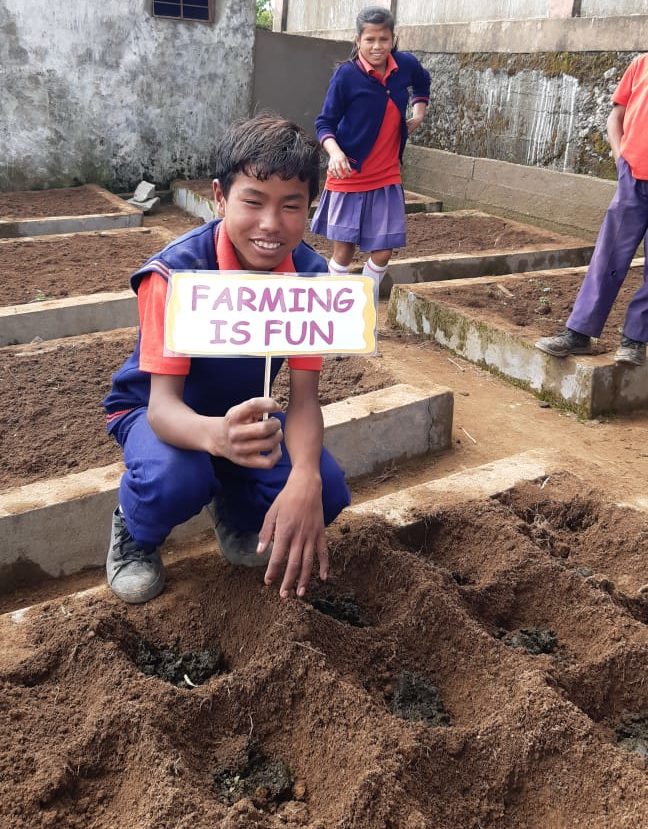School Gardens are special areas reserved around schools for cultivation of vegetables and fruits. Usually tended by students and instructors, they serve as a good platform for learning and understanding the basic methods of farming, understanding where food comes from and integrating humanities and science subjects to a practical based knowledge system.
Another benefit of the school gardens is that the students will learn how to grow healthy food and use it for a better, nutritional diet. This can best be done if the produce, i.e., the fruits and vegetables, are contributed to the Midday Meals of the schools.
School and community gardens, participatory documentation of traditional knowledge and inter-generational knowledge sharing were initiated with the people through the School Garden Projects. Communities have taken this opportunity to involve their children in the village schools to learn the names of the crops that they grow and their importance and nutritional value. Not only does the initiative serve as a chance for children to learn about the food they eat, it also inculcates respect for the occupation of farming which is slowly losing popularity among the youth.
Click here to learn how to establish a School Garden
Related articles:
10 villages meet to improve School Gardens
Sohliya Gets a School Garden
Getting to know “Gardens according to Slow Food” – A report by Janak Preet Singh
Connecting to Mother Earth through School Gardens
Scroll down to view pictures:








